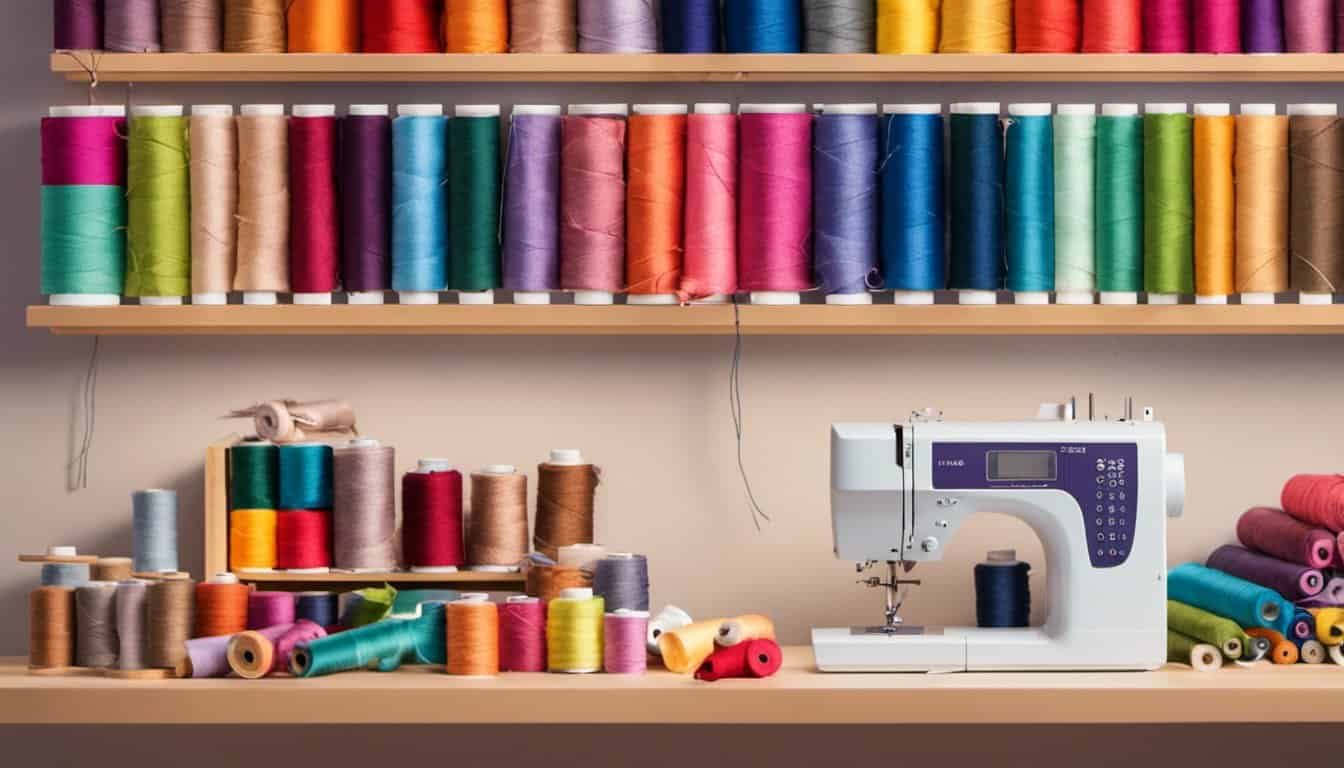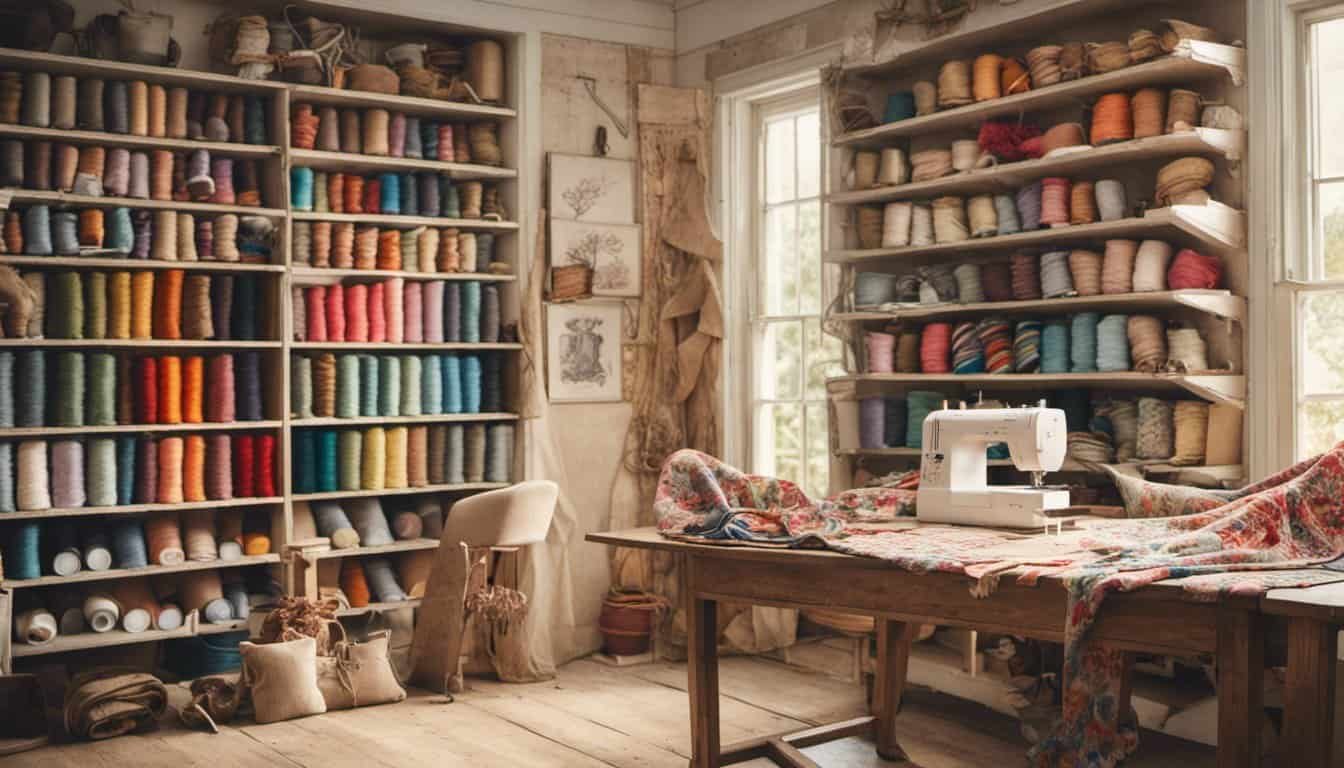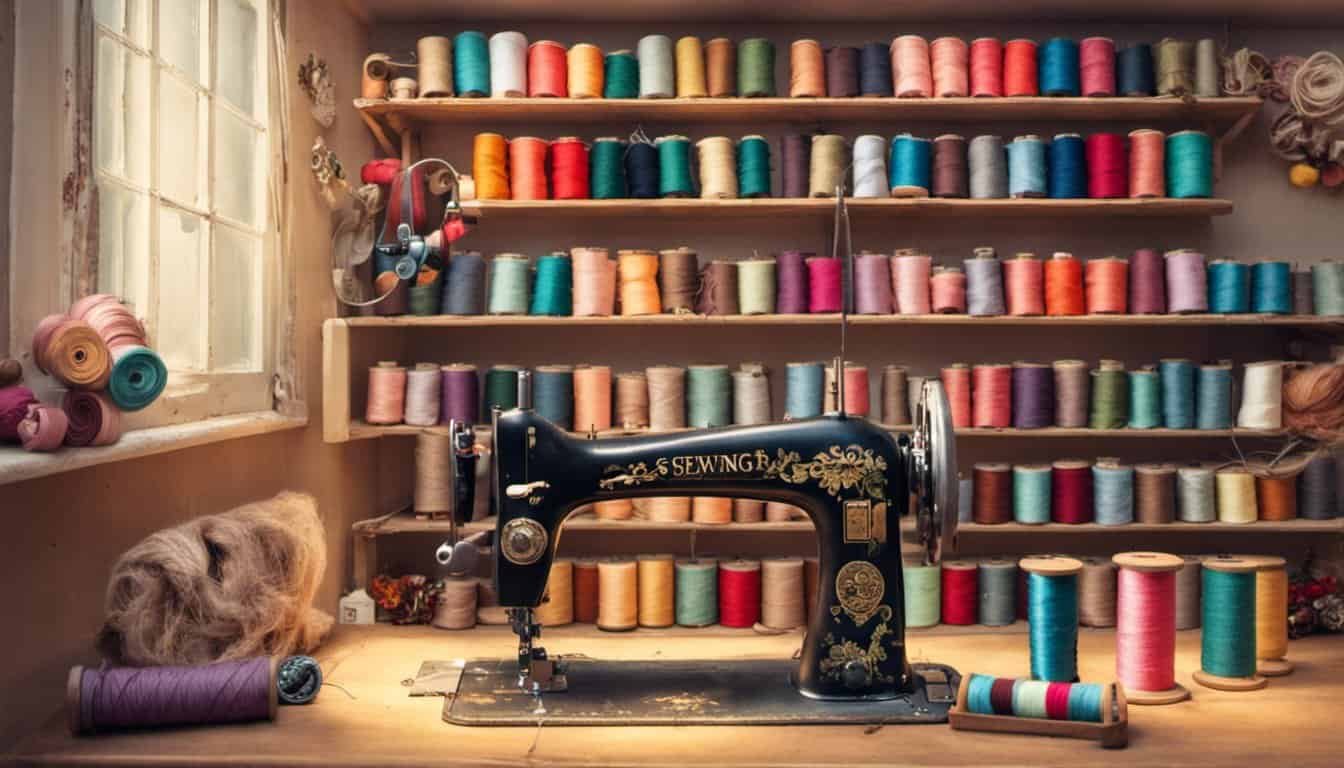As I dove into sewing projects, I quickly realized that handling curved edges can be tricky. Bias tape became my go-to solution for giving those challenging curves a smooth, professional finish.
Materials Needed
- Bias Tape: Pre-cut strips or fabric to cut your own, typically 1.5 inches wide.
- Fabric Scissors: Sharp scissors for precise cutting of the bias tape.
- Sewing Machine: Ensures secure and even stitching along the edges.
- Thread: Matching or contrasting color, suitable for your fabric type.
- Pins or Clips: Holds the bias tape in place while sewing.
- Iron and Ironing Board: Presses the bias tape for smooth application.
- Measuring Tape or Ruler: Measures accurate lengths for your bias tape.
Preparing The Bias Tape
Preparing bias tape accurately ensures smooth application on curved edges. Here are the essential steps:
Selecting Fabric
Choosing the right fabric affects the tape’s flexibility and appearance. I prefer lightweight cotton or polyester blends for their durability and ease of handling.
Cutting the Bias
Cutting on the fabric’s bias (45-degree angle) provides elasticity. I measure the required length, adding a few extra inches for seams, then use sharp fabric scissors to cut precise strips.
Marking the Fold
Marking helps maintain consistency. I use tailor’s chalk to indicate the center fold line along the length of the tape, ensuring even edges.
Pressing the Seams
Pressing stabilizes the tape. I fold the fabric strip in half lengthwise with right sides facing, pin the edges, and press with an iron to create a crisp fold.
Assembling the Tape
Aligning edges correctly is crucial. I open the pressed strip, fold each raw edge toward the center fold, and press again to form the bias tape ready for sewing.
Measuring Accuracy
Accurate measurements prevent waste. I double-check my measurements before cutting to ensure the tape matches the curved edge requirements of the project.
Storing Prepared Tape
Proper storage maintains tape quality. I store the prepared bias tape on a flat surface or roll it gently to avoid unwanted creases until ready for use.
Tools and Materials
Having the right tools streamlines the process. I ensure I have fabric scissors, tailor’s chalk, an iron, pins or clips, and measuring tools within reach during preparation.
Troubleshooting
Addressing issues promptly keeps projects on track. If the tape twists while cutting, I realign it before pressing to maintain straight edges.
Quality Check
Performing a final check ensures readiness. I inspect the bias tape for consistent width, sharp folds, and absence of wrinkles to guarantee a professional finish.
Storage Tips
Storing bias tape correctly extends its usability. I keep it in a dry, flat area away from direct sunlight to prevent fabric degradation.
Safety Precautions
Maintaining safety prevents accidents. I handle scissors and irons with care, keeping fingers clear and using protective gear when necessary.

Efficiency Tips
Improving efficiency saves time. I prepare multiple bias tape strips at once, allowing simultaneous sewing on different project sections.
Customizing Width
Custom widths cater to specific project needs. I adjust the cutting measurements to create wider or narrower bias tape based on the curve’s requirements.
Seam Allowance
Consistent seam allowance enhances the final appearance. I maintain a uniform seam allowance when attaching the bias tape to ensure evenness along the curve.
Ironing Techniques
Proper ironing techniques ensure smooth bias tape. I use medium heat with steam, pressing firmly along the fold lines to achieve a sharp, precise finish.
Fabric Compatibility
Ensuring fabric compatibility prevents issues. I test the bias tape on a scrap piece to confirm it adheres well and behaves as expected on the curved edge.
Time Management
« 10 Secrets to How to Sew a Plain Seam Perfectly Every Time
You Won’t Believe How Easy It Is: How to Read a Sewing Pattern Step-by-Step »
Managing time effectively keeps projects on schedule. I allocate specific time slots for preparing bias tape, integrating it seamlessly into the overall sewing process.
Labeling Strips
Labeling prepared strips aids organization. I mark each bias tape strip with its intended use or length, simplifying the sewing process and reducing errors.
Reusing Excess Tape
Reusing excess bias tape minimizes waste. I store leftover strips for future projects, ensuring efficient use of all materials.
Final Preparation
Final preparation readies the tape for sewing. I double-press the bias tape, ensuring all folds are sharp and the tape lies flat, ready to be attached to the curved edge.
Maintenance
Maintaining prepared bias tape prolongs its usability. I keep the tape clean and free from moisture, storing it properly to prevent damage or deformation.

Sewing Techniques
Mastering different sewing techniques enhances the precision and quality of your curved edges. I utilize both hand and machine sewing methods to achieve professional results.
Hand Sewing
Hand sewing offers control and flexibility, especially for intricate curves.
- Stitch Types: I use the slip stitch for invisible seams and the backstitch for strength.
- Thread Selection: Opt for polyester thread due to its durability and elasticity.
- Stitch Length: Maintain a consistent stitch length of 2.5 mm for uniformity.
- Pin Placement: Place pins every 5 cm to secure the bias tape without puckering.
- Finishing: Trim excess threads and press seams to ensure a clean finish.
Machine Sewing
Machine sewing speeds up the process and ensures consistent results on curved edges.
- Machine Settings: Set the tension to 4 and use a 1.5 mm stitch length for smooth curves.
- Presser Foot: Attach a narrow zigzag foot to accommodate the bias tape’s width.
- Turning Technique: Guide the fabric gently to maintain the curve’s shape without stretching.
- Seam Guideline: Sew along the marked guideline to ensure accuracy.
- Pressing: Use a steam iron to press seams open, enhancing the tape’s flexibility around curves.
| Technique | Setting | Measurement |
|---|---|---|
| Hand Stitch Type | Slip stitch | – |
| Machine Stitch | 1.5 mm length | 2.5 mm length |
| Pin Placement | Every 5 cm | – |
| Thread Type | Polyester | – |
By applying these hand and machine sewing techniques, I achieve smooth and professional curved edges in my sewing projects.
Achieving Curved Edges
Curved edges require careful handling to maintain smoothness and uniformity. Using bias tape effectively simplifies the process.

Easy Curve Method
I start by measuring the curve’s length accurately, ensuring the bias tape matches the desired curve. Then, I press the bias tape edges open with an iron for a crisp finish. Aligning the bias tape with the fabric’s edge, I pin it in place every 5 cm to prevent shifting. Sew along the pinned line using a 1.5 mm stitch length, guiding the fabric gently to follow the curve. After stitching, I press the seam allowance flat, enhancing the curve’s appearance.
Adjusting For Tight Curves
For tighter curves, I adjust the bias tape by cutting it shorter to accommodate the curve’s angle. I pre-press the fabric and bias tape together to set the shape before sewing. When sewing, I use a narrow zigzag foot to navigate sharp bends smoothly. I reduce the stitch length to 1 mm for increased control and precision. If the curve is very tight, I make small tucks along the edge and press them inwards before stitching. This method ensures the bias tape conforms tightly to the fabric, maintaining a professional finish on intricate curves.
Common Mistakes To Avoid
- Cutting Bias Tape Off the Bias
Cutting bias tape exactly on the 45-degree angle ensures flexibility. Off-angle cuts make the tape stiff, preventing smooth curves.
- Skipping Seam Pressing
Pressing seams flat eliminates bulk. Without pressing, bias tape can create uneven curves and puckers.
- Using Incorrect Stitch Length
Setting stitch length to 1.5 mm balances durability and flexibility. Too long weakens seams; too short causes bulk.

- Misaligning Tape Placement
Aligning bias tape accurately avoids gaps and overlaps. Measure twice, pin securely, then sew to maintain alignment.
- Inaccurate Measurements
Measuring curve lengths precisely prevents waste. Double-check measurements to ensure consistent bias tape lengths.
- Choosing Inappropriate Threads
Selecting polyester thread enhances durability and fabric compatibility. Avoid cotton threads that may weaken seams.
- Forgetting to Secure Threads
Backstitching at the start and end secures seams. Skipping this step allows threads to loosen and seams to unravel.
- Ignoring Fabric Shrinkage
Pre-washing fabrics accounts for shrinkage. Neglecting this can distort curves and affect bias tape fitting.

- Overloading the Sewing Machine
Feeding too much fabric strains the machine. Use a steady hand and guide fabric smoothly to prevent skipped stitches.
- Not Testing on Scrap Fabric
Testing settings on scrap fabric identifies issues early. Skipping tests can lead to mistakes on the main project.
Conclusion
Working with bias tape for curved edges has truly transformed my sewing projects. Seeing those smooth and professional finishes makes all the effort worthwhile. While it might seem tricky at first, once you get the hang of it you’ll find it invaluable for intricate designs. I’m excited to continue experimenting and refining my techniques. Happy sewing!

















